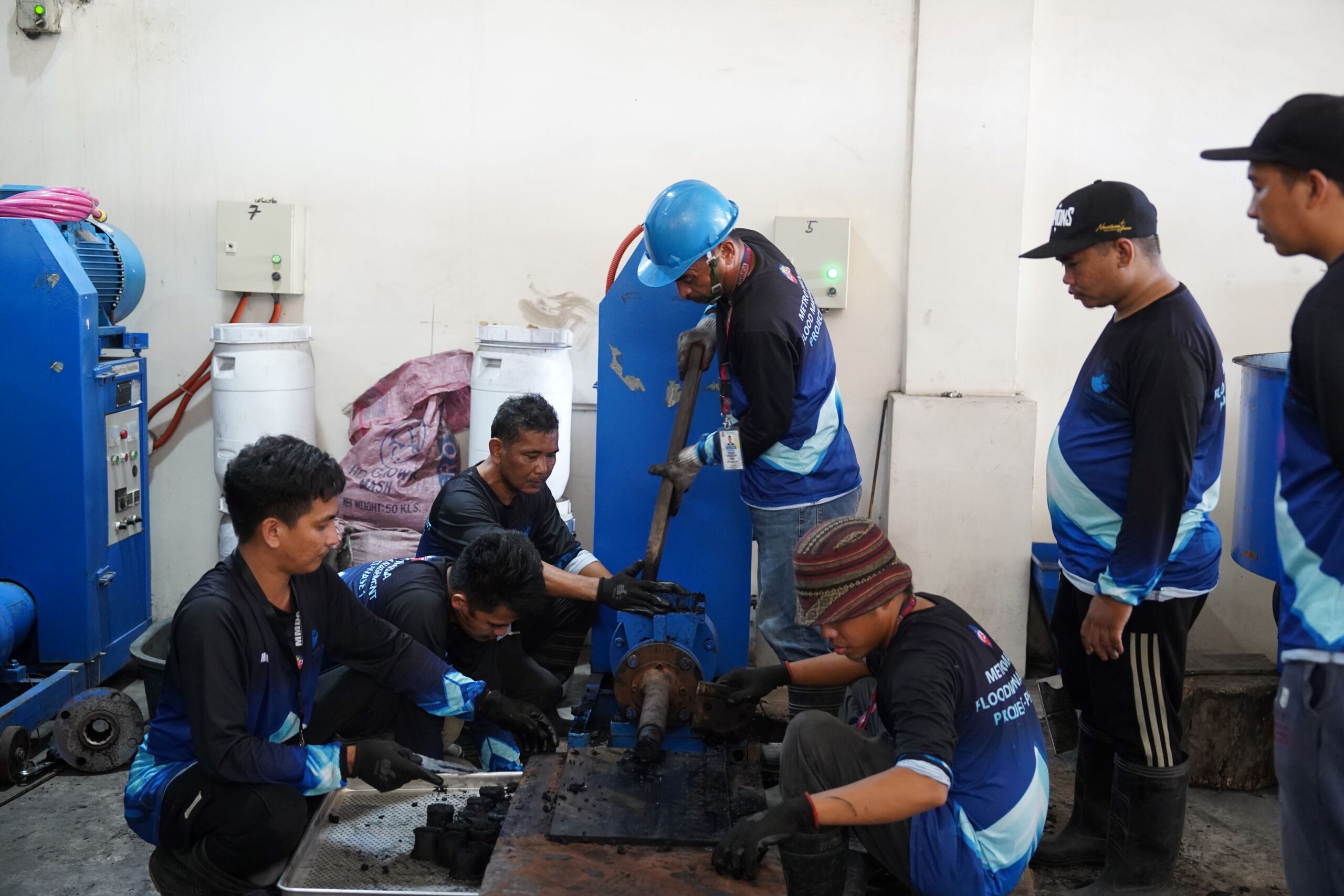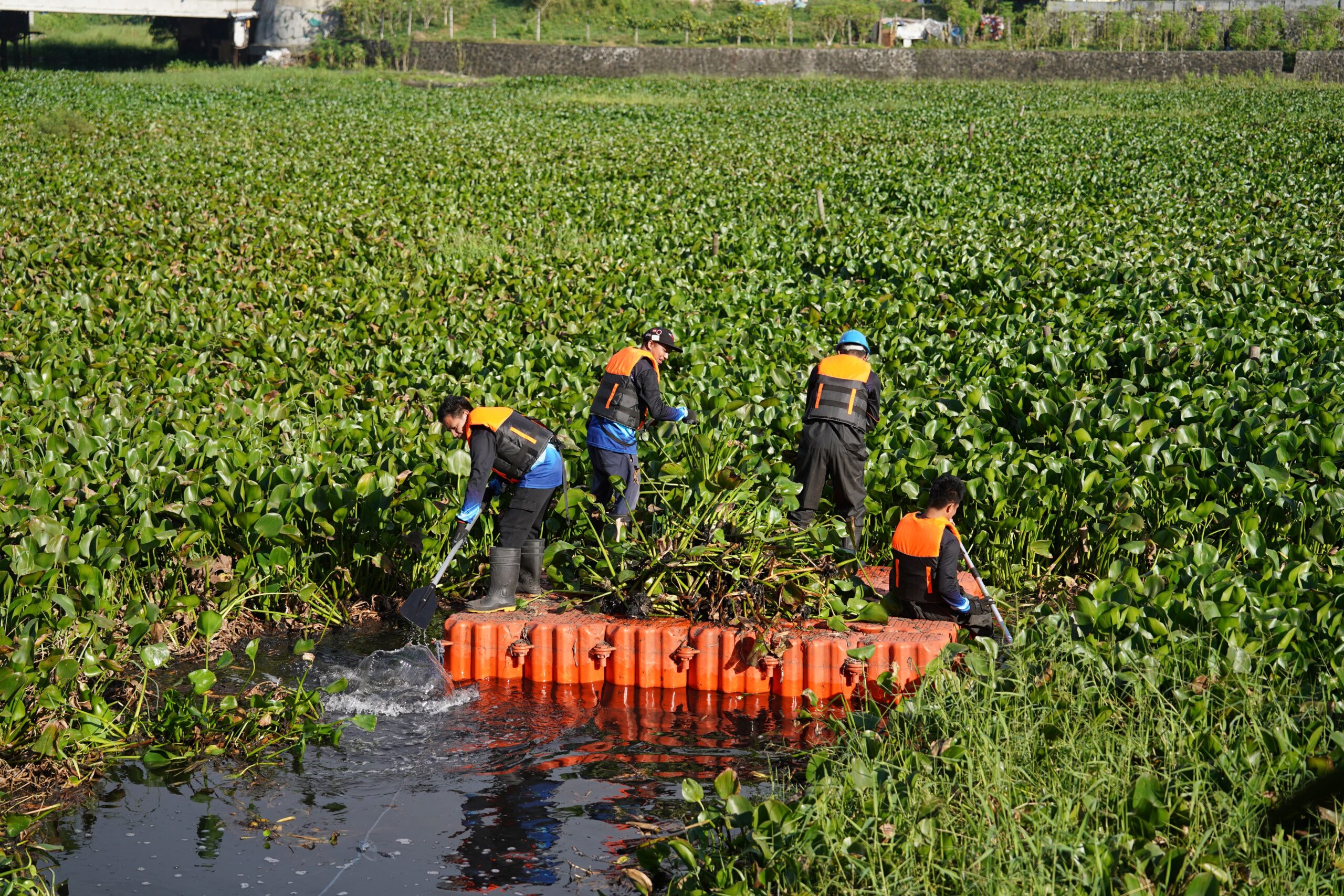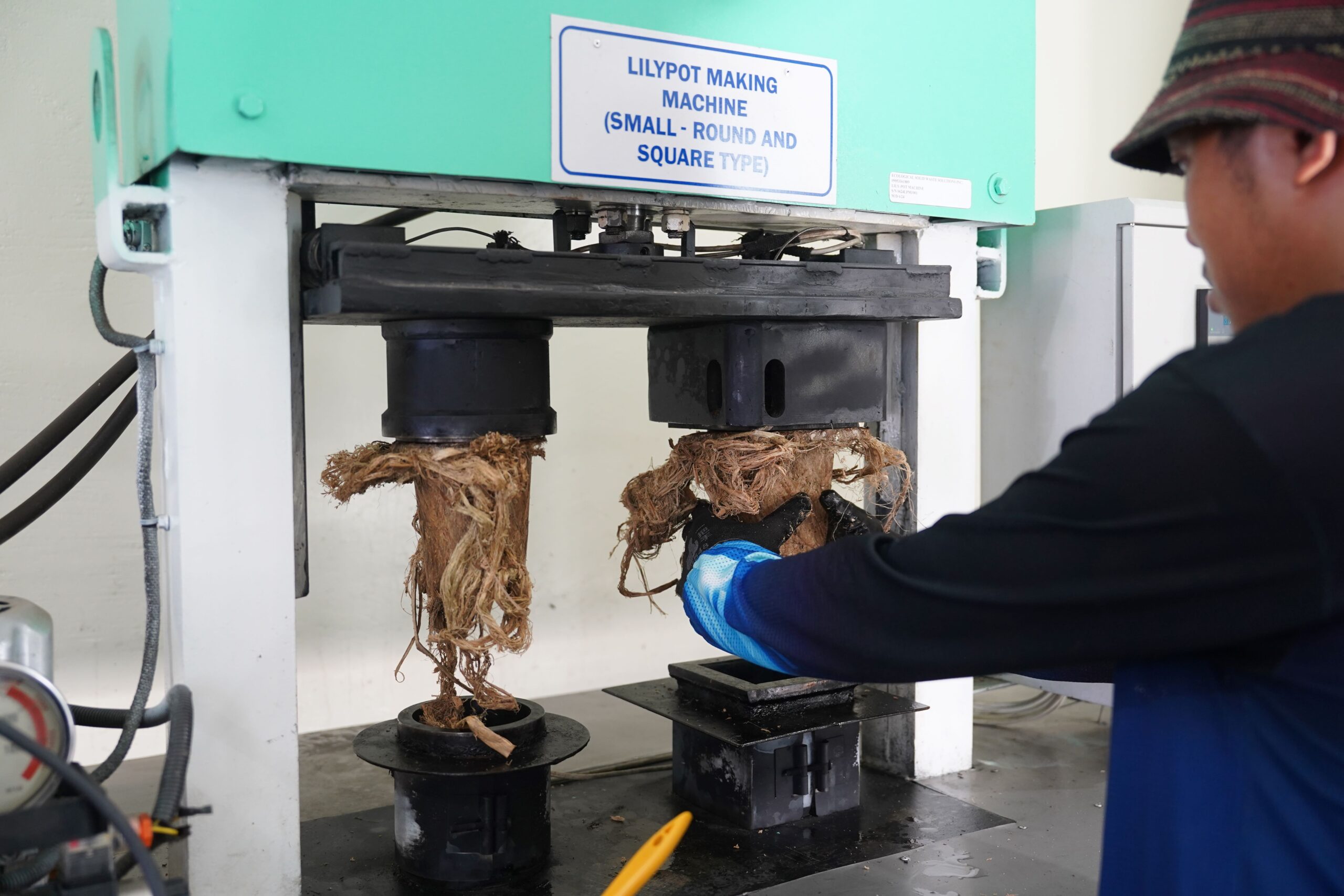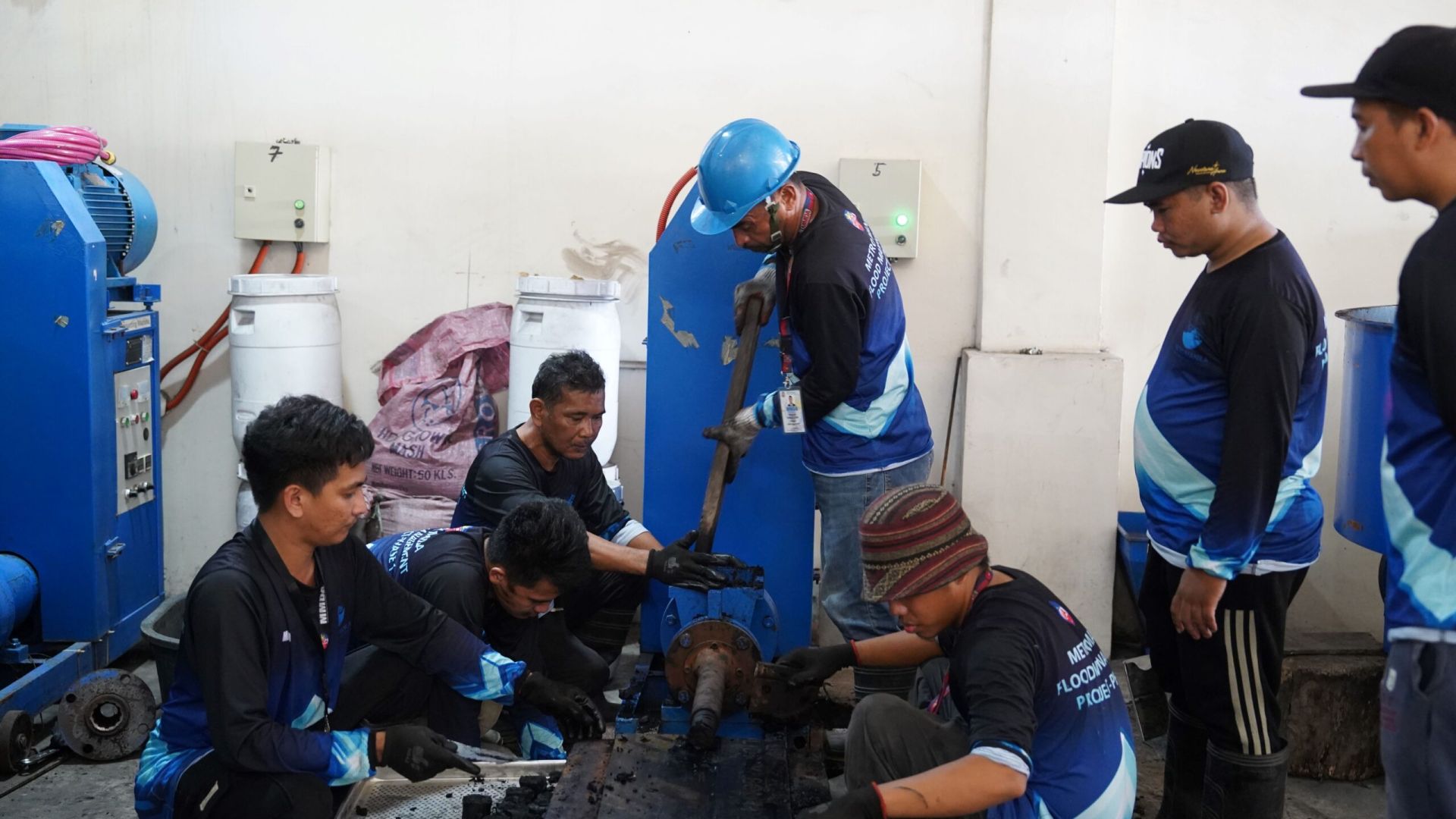The Metropolitan Manila Development Authority (MMDA) is leading the way in sustainable waste management and flood control with its innovations at the Tapayan Pumping Station. This specialized facility transforms water hyacinths, a major contributor to waterway obstruction and flooding, into valuable resources such as charcoal briquettes and lilipots for gardening and community use.
Water hyacinths, with their rapid growth and tendency to clog waterways, pose a significant threat to Metro Manila’s drainage systems. The Tapayan River, where one of the MMDA’s Pumping Stations is located, is heavily covered by these invasive plants. “The abundance of water hyacinths severely hinders water flow and impacts the efficiency of our pumping stations,” explained Engineer John Chrisler Lucero from MMDA Metro Manila Flood Management Project (MMFMP) – Project Management Office (PMO). “Removing water hyacinths is crucial for flood mitigation. As they habitually form thick mats that impede water flow, they tend to reduce the capacity of waterways and increase the likelihood of overflows and flooding. This facility’s efforts directly address this problem. By processing these plants at the Tapayan facility, we do not only alleviate these issues but also contribute to cleaner waterways and a more sustainable environment.”



At the Tapayan Pumping Station, collected water hyacinths undergo a significant transformation process. Two (2) products are made from dried water hyacinths: charcoal briquettes and lily pots. Both processes rely on heat and compression. For charcoal briquettes, the dried plants undergo carbonization (heating) and are then mixed with a specific ratio of soil and water prior to extrusion into briquettes of the desired shape and size. Lily pots, on the other hand, are formed by bundling the dried hyacinths, placing them in a mold, and using a hydraulic press to shape them into pots. A binder is added to enhance the pots’ durability. This facility enables MMDA to unclog waterways by harvesting water hyacinths without disposing them to landfills. “Diverting water hyacinths from landfills, which generate harmful greenhouse gases like methane, significantly reduces their environmental impact,” added Engineer Lucero. “Furthermore, repurposing these plants into valuable products promotes a circular economy.”
The facility actively engages with local communities through “palit-kalakal” initiatives, where residents can exchange recyclable materials such as plastic and glass for briquettes and lily pots. This incentivizes proper waste segregation and encourages communities to participate in sustainable SWM programs. According to Engineer Lucero, “these initiatives demonstrate how individual actions can create economic opportunities and introduce positive change.”
As of February 2025, MMDA has reported the recovery of 19,881 kilograms of water hyacinths. These efforts have resulted in the production of 4,506 charcoal briquettes and 226 lily pots.
Beyond processing water hyacinths, MMDA motivates communities to participate in briquette production to further promote awareness of sustainable waste management practices. The agency also addresses the challenge of flooding by educating communities about the link between waste and drainage problems, empowering them to become leaders in creating solutions and ensuring long-term sustainability from institutions to households. Engr. Lucero notes that MMDA “aims to inspire broader community engagement that cultivates a lasting impact and a sense of responsibility towards a better quality of life.”
The Tapayan Pumping Station serves as a vital component of the MMDA’s comprehensive flood mitigation strategy. By effectively removing water hyacinths, the facility directly improves drainage capacity and reduces the risk of flooding in the affected areas. It further exemplifies MMDA’s commitment to innovative solutions by transforming waste into resources. The agency is paving the way for a cleaner, greener, and more resilient future for Metro Manila.
Looking ahead, MMDA is exploring the establishment of centralized and decentralized materials recovery facilities to further advance its zero-waste goals.
For more information on MMDA’s projects and initiatives, visit their website or follow @MMDA on social media.




